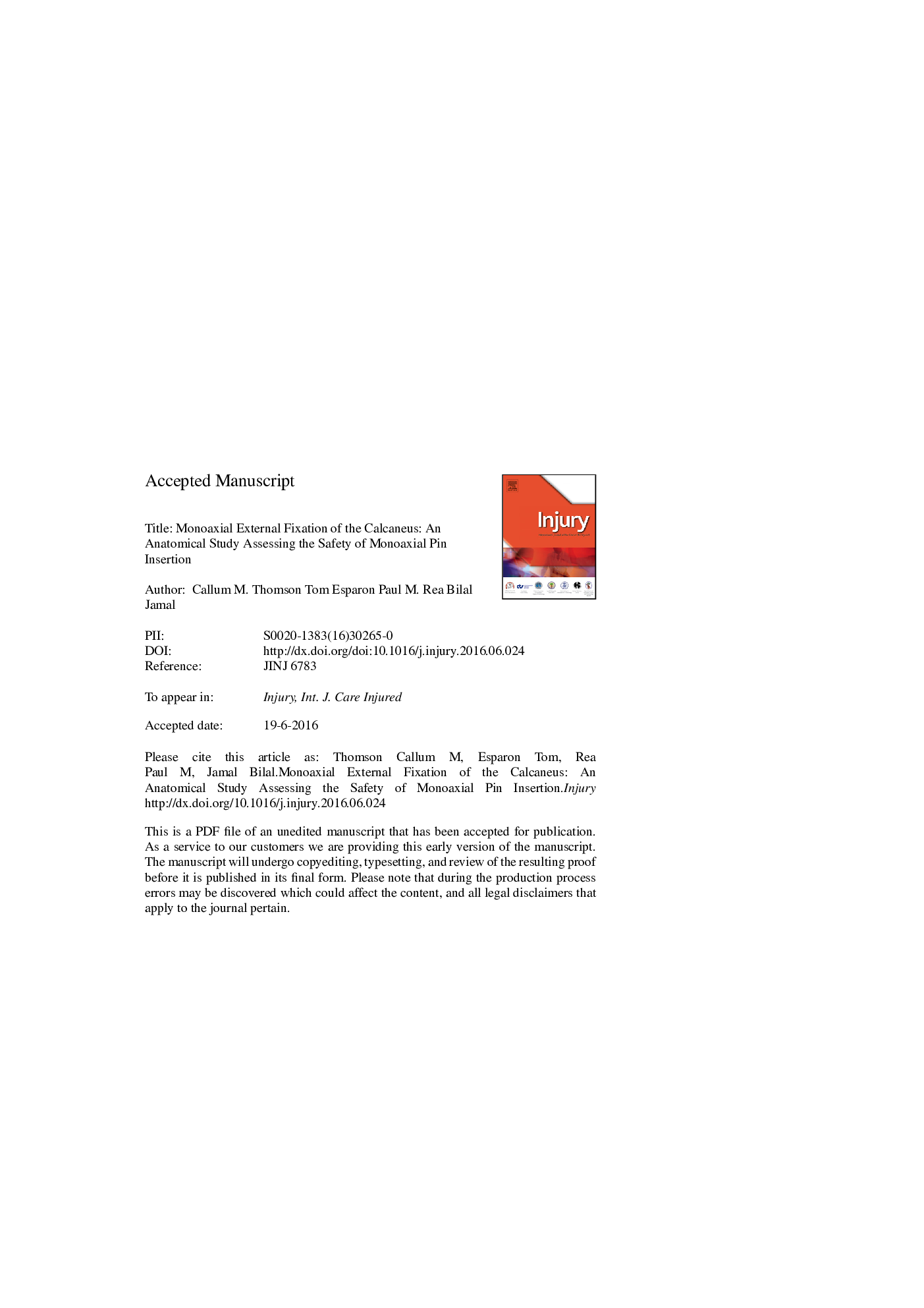| Article ID | Journal | Published Year | Pages | File Type |
|---|---|---|---|---|
| 5652874 | Injury | 2016 | 21 Pages |
Abstract
This study aimed to determine the safety of inserting monoaxial pins within the calcaneus to house the Orthofix Calcaneal Mini-Fixator. Five formalin embalmed cadaveric ankle and lower leg specimens were inserted with six monoaxial pins. Careful dissection then revealed the presence of the tendons of peroneus longus and brevis, the sural nerve and the small saphenous vein in relation to these pins. Measurements from each pin to each of these structures were made as the structures transected lines drawn from each pin to two palpable bony landmarks: the inferior tip of the lateral malleolus and the posterosuperior calcaneus. In doing this, the risk posed by each pin could be evaluated. We found that two particular pins, those used to hold the articular surface of the subtalar joint in a reduced position, posed a larger risk of injury to surrounding structures than the remaining pins. These findings therefore suggest that monoaxial fixation of the calcaneus using a six pin approach is a relatively safe method of rectifying calcaneal fractures and thus may serve as a welcome alternative to other methods of calcaneal fixation.
Related Topics
Health Sciences
Medicine and Dentistry
Emergency Medicine
Authors
Callum M. Thomson, Tom Esparon, Paul M. Rea, Bilal Jamal,
